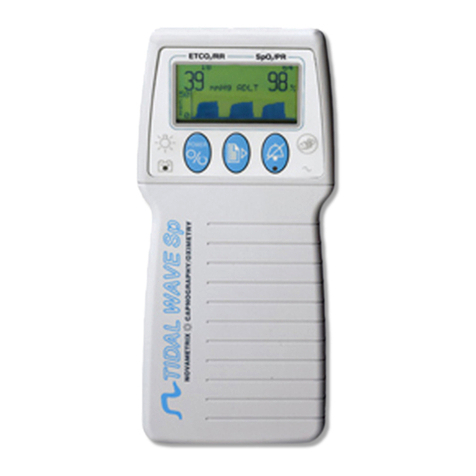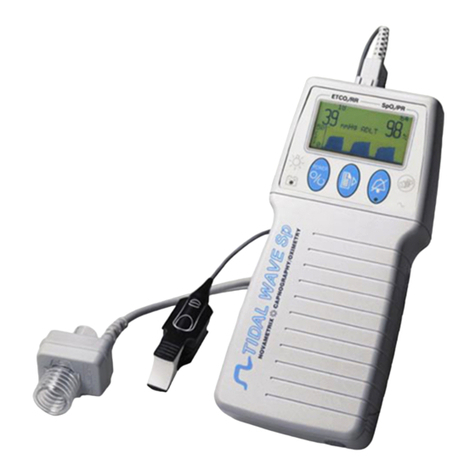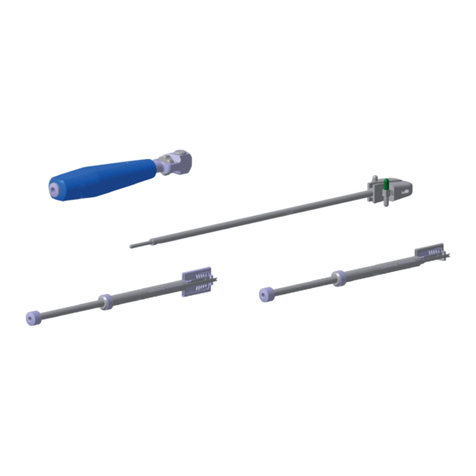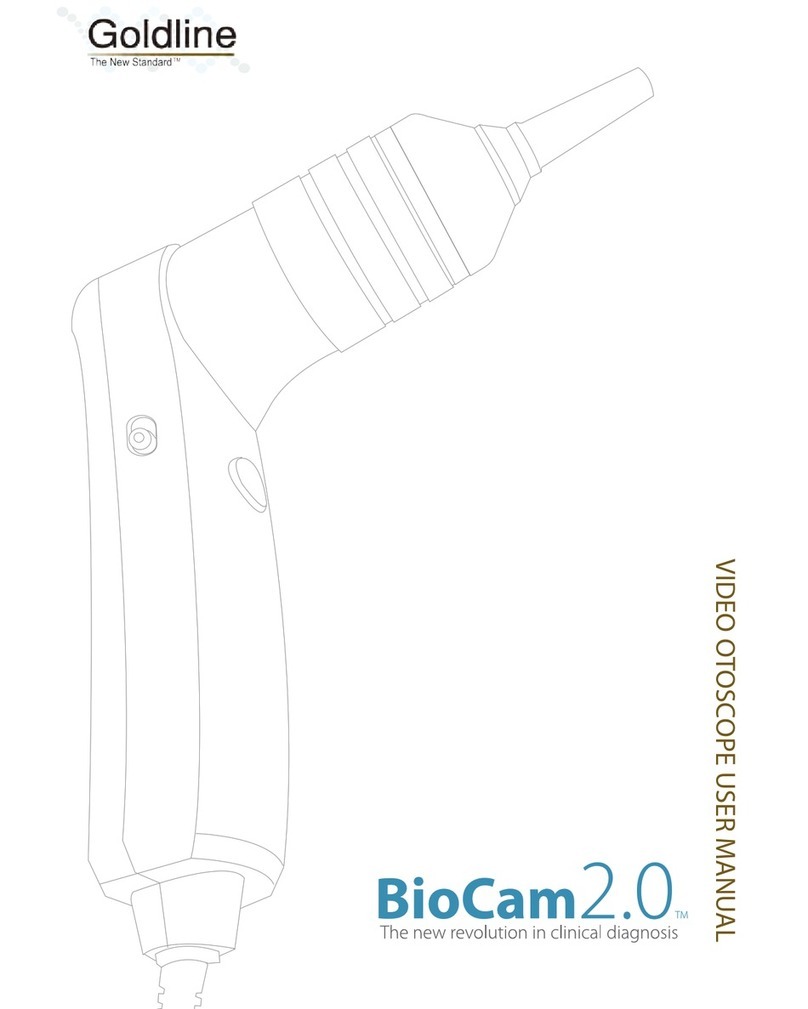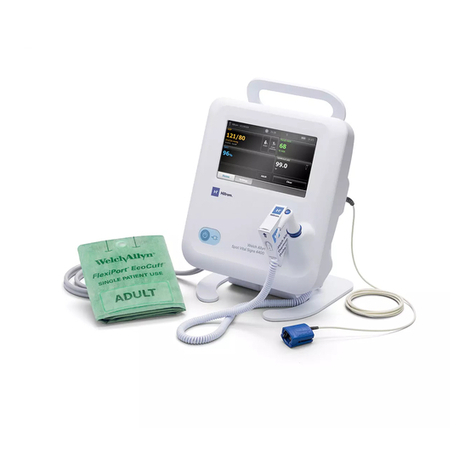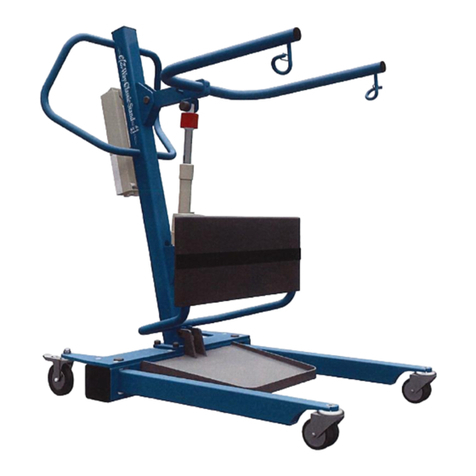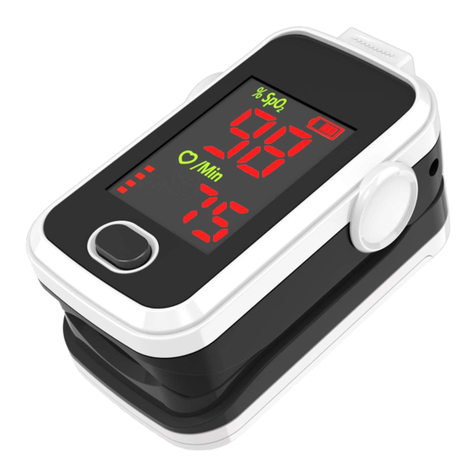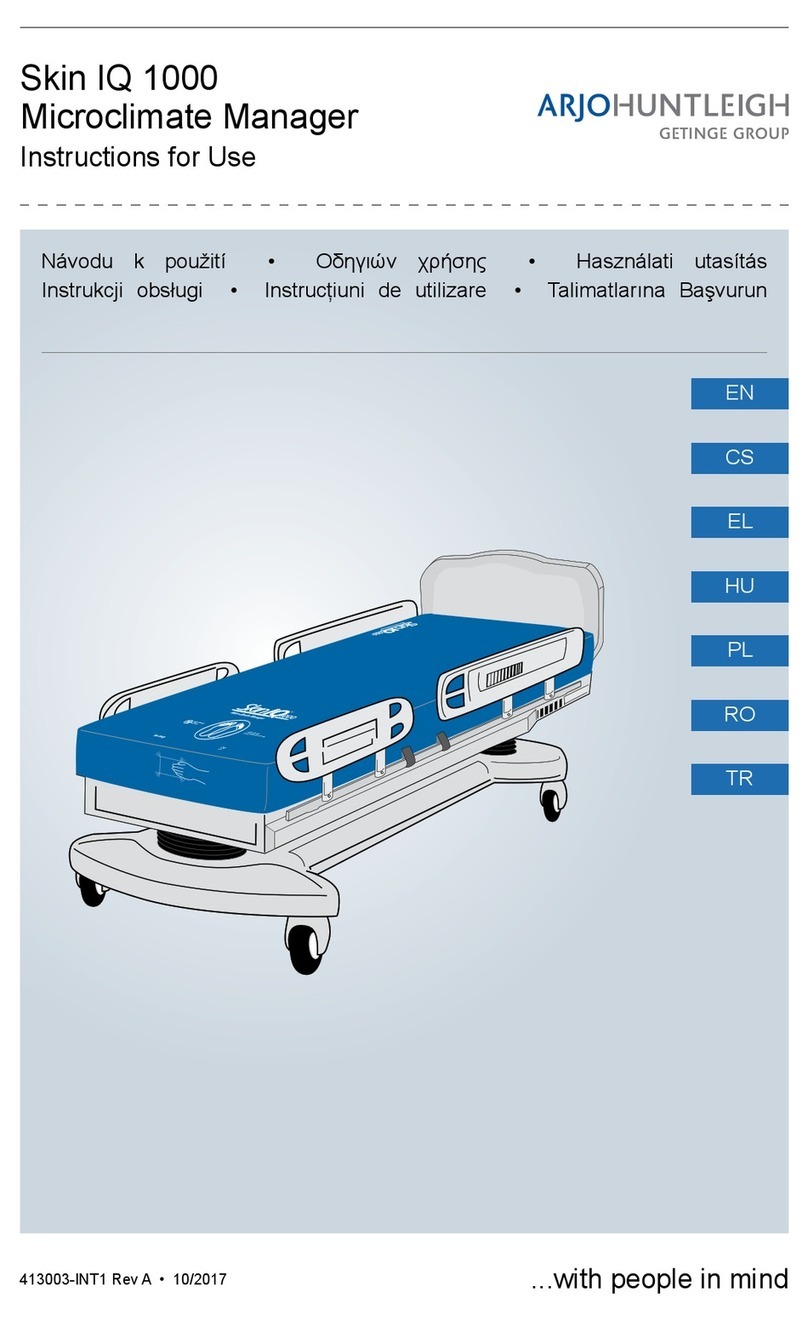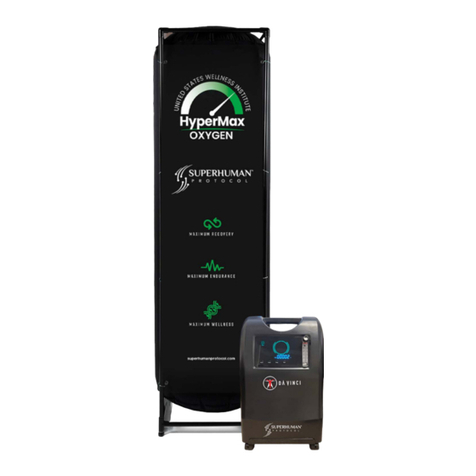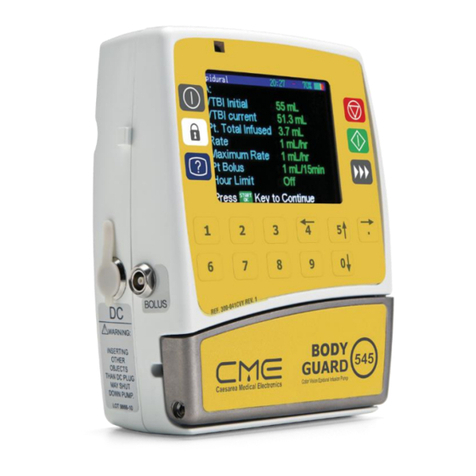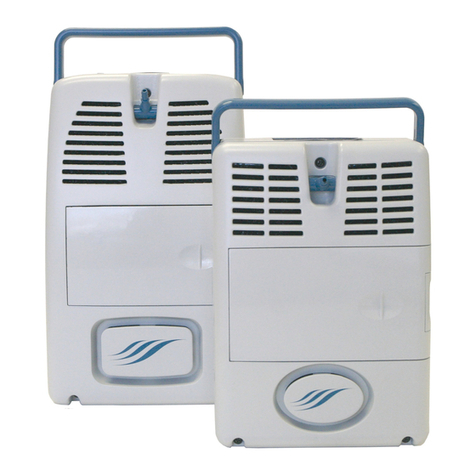
4 Electronic Theory of Operation 2543 Main Board
8Model 509 Service Manual Rev. 00
4.1.3 Photodiode Return Path
Refer to schematic sheet 2. Light, from the sensor’s red or infrared LED, shines through
the pulsating vascular bed (the patient’s finger, toe, etc.) placed between the LEDs and
the photodiode. Some of this light emerges from the tissue and impinges on the
photodiode, causing the photodiode to conduct current. IC4B pins 5-7 are set up as a
differential amplifier that converts this input current to a voltage at the amplifier output.
The sensors are wired such that photodiode current produces a positive voltage at
IC4B pin 71.
The voltage at IC4B pin 7 is presented to an analog switch IC5B pin 6. This switch is
controlled at pin8 by INSIG (Input Signal), and will be closed (IC5B pins 6 and 7
connected) except if the monitor is in a probe off patient condition or is undergoing its
self-test at system power up. The switch IC5C pins 9-11, controlled from SIGND (Signal
Ground) will be open (no connection between IC5C pins10 and 11) except as noted
above for the switch at IC5B pins 6-8. As a result, the IC4B pin 7 voltage passe
undisturbed to the high pass filter consisting of R14 and C15.
The ASAMP signal is active whenever either sensor LED is turned on. This causes Q5
to turn off and the charge at C15 passes through to IC4A pin 3. The ASAMP line returns
to a logic high when neither LED is being driven, causing Q5 to turn on. With Q5
conducting, any charge at C15 is discharged to ground and the next pulse will charge
C15 from a known level. If it were not for Q5, any charge remaining on C15 from the
previous pulse or from ambient light reaching the photodiode would be added to the
charge from a new pulse—creating measurement errors.
If the signal at IC4A pin 1 is the product of the Red LED being turned on, then RDSAMP
will go low and close the switch at IC5A pins 2-3, thereby presenting the signal to a
sample and hold circuit consisting of R29 and C26 (that maintains the signal until next
sample pulse arrives), a gain stage, (IC6A), a filter network (C34 and R34), and finally,
to the red channel Analog-to-Digital Convertor (ADC) IC10.
If the signal at IC4A pin 1 is the product of the Infrared LED being turned on, then
IRSAMP will go low and close the switch at IC5D pins 14-15, thereby presenting the
signal to a sample and hold circuit consisting of R28 and C25 (that maintains the signal
until next sample pulse arrives), a gain stage, (IC6B), a filter network (C29 and R38),
and finally, to the infrared channel Analog-to-Digital Convertor IC9.
4.1.4 Calibrating the 20-Bit Analog to Digital Converters (ADCs)
The 20-bit ADCs are calibrated as part of the system self-test which occurs each time
the monitor is turned on. At power up, the microprocessor sets the CAL line high. The
system calibrations input SC1 is set high. The CS5503 ADC will not operate while the
CAL line is high. On the falling edge of the CAL signal, the ADC will initiate a calibration
cycle. The type of calibration is determined by the state of the SC1.
The high at SC1 causes INSIG to go high and reset SIGND to a logic low. The high
INSIG opens the switch at IC5B pin8 so that IC5B pins 6 and 7 are no longer
connected—disconnecting the returning photodiode signal from the rest of the circuitry.
The low SIGND signal closes the switch at IC5C pin9 and as a result, the input to the
C15-R14 high pass filter (and thus the entire ADC input circuitry) is brought to ground
potential.
The CAL line (which went high at power up) is reset low and ADCs IC9 and IC10 begin
their calibration cycles. Because the analog input circuitry is grounded via SIGND, only
circuit offset voltages can be present at the (pin 9 AIN) inputs. The calibration cycle sets
1. The Model 509 uses SuperBright™ sensors. If a non-SuperBright™ sensor is connected, IC4b pin 7 will go negative.






















